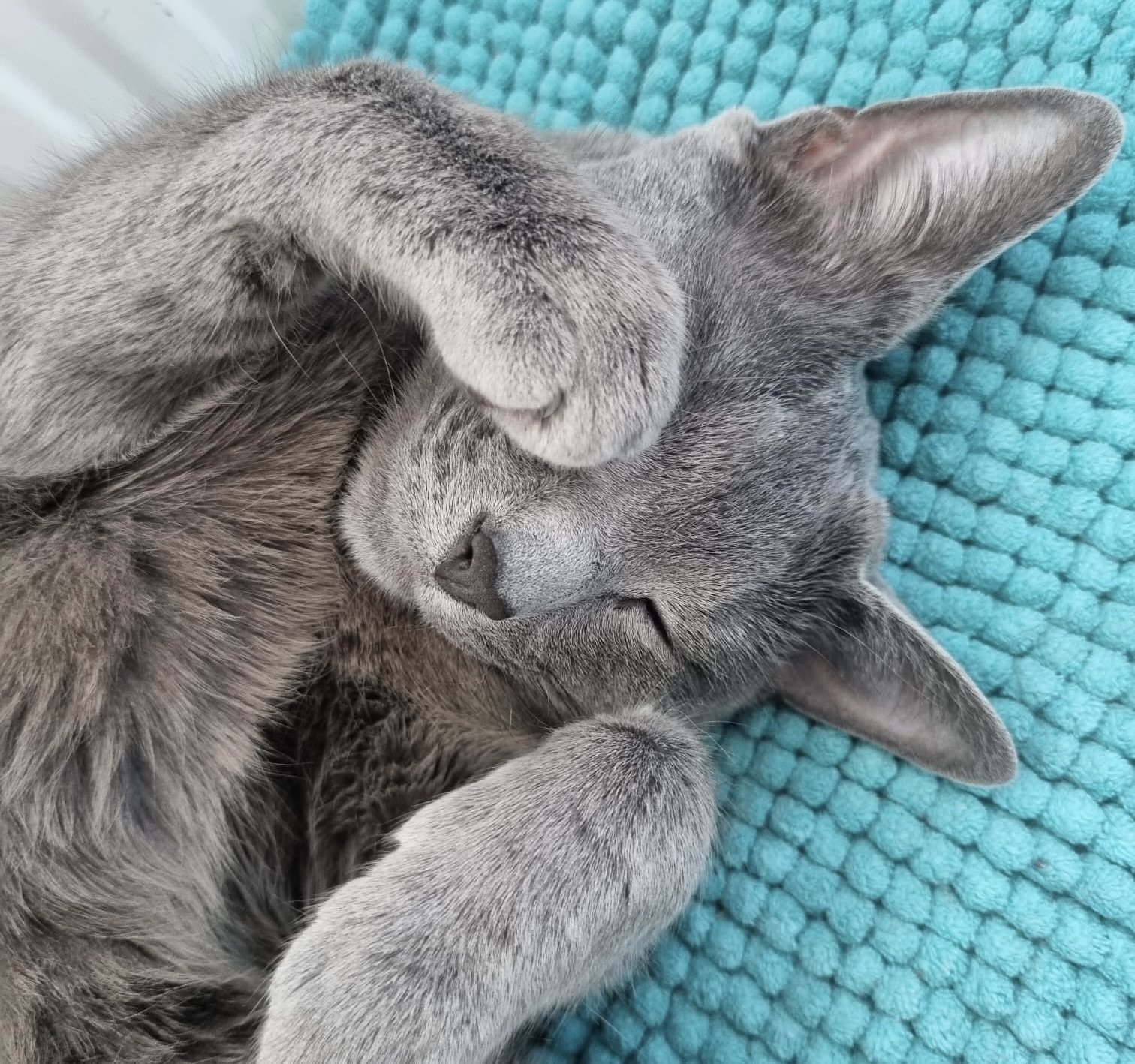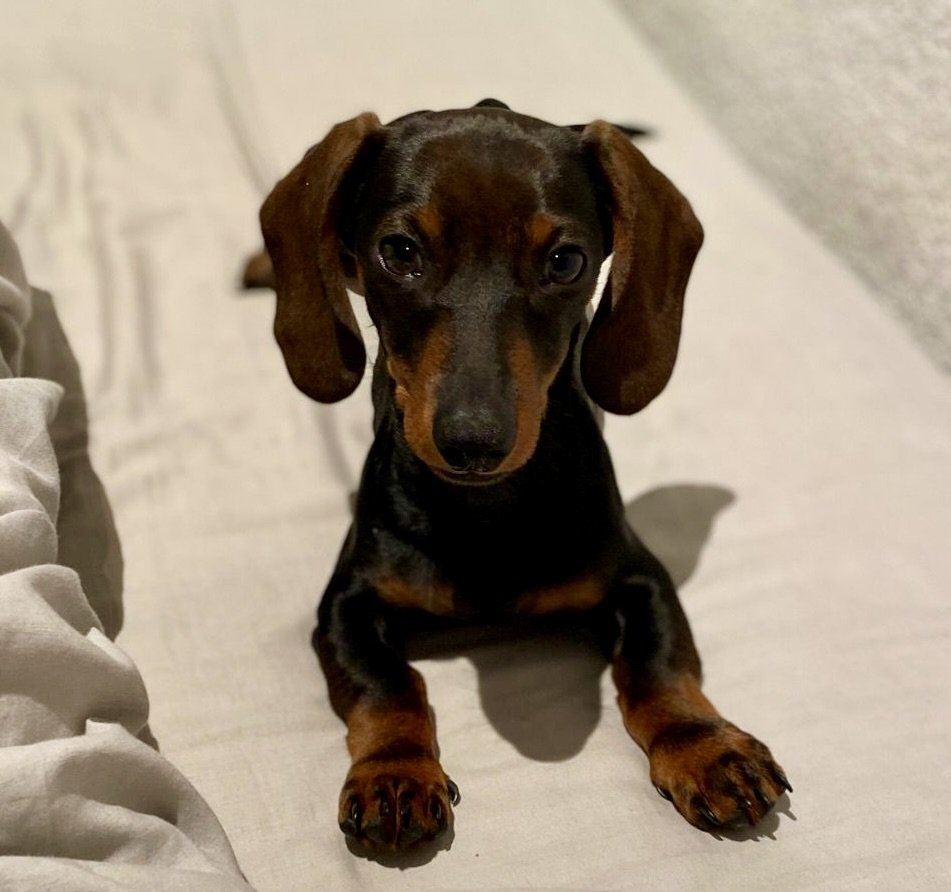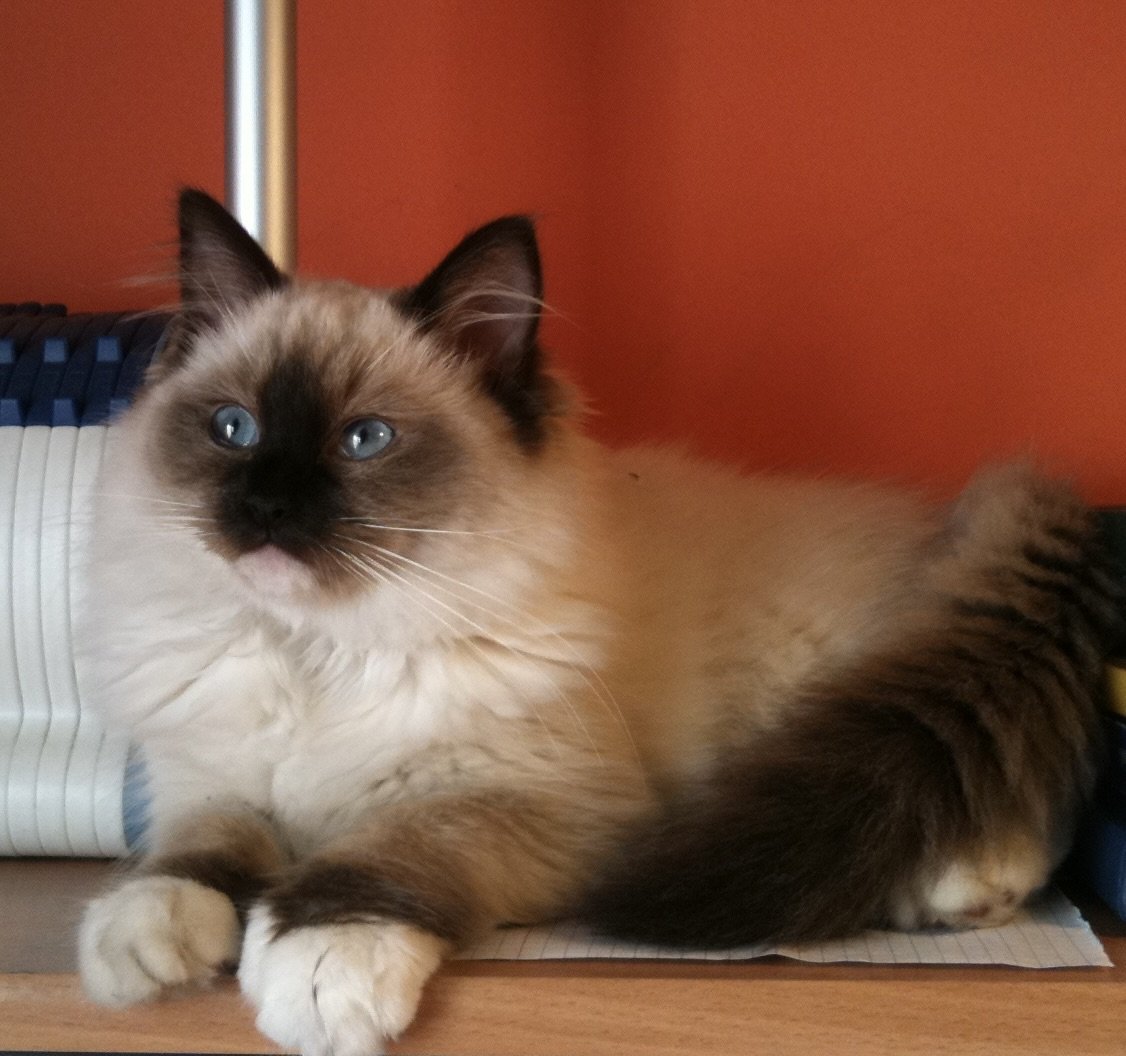
Filters
CLEAR ALLIf a Turkish Angora gets an idea into their brilliant head, it can be challenging to change their curious mind about how they should behave. But to most Turkish Angora owners, they are so attractive and charming that they don't really care.
Gorgeous and sophisticated, the Turkish Angora can surprise the unsuspicious looker with their strength and intelligence. This active feline will greet guests at the door and entertain them. They are very agile and are often seen in high places, like the top of the furniture or refrigerator.
These affectionate kitties are interested in everything their human companion does and are always looking for ways to help. They are very clever and can open cupboards, cabinets, and doors, and are known for getting into things.
The Turkish Angora is very sociable and best suited in an environment where there is another cat or dog to keep them company, especially if their human companion is not home all day. Also, they are known to follow commands, stay by their human companion’s side and sleep cuddled up to them in bed.
Adored and cherished in their native land, Turkey, Turkish Angoras are perhaps the only domestic cat kept, bred and raised in a zoo. For a time, it was believed that all these beautiful, intelligent, majestic cats were deaf and were used massively in crossbreeding to create the Persian breed. Because of this, Turkish Angoras were almost driven to extinction.
While still a rare cat breed today, Turkish Angoras have a loyal following worldwide among cat lovers who appreciate this soft, visually captivating long-haired cat. With their high intelligence and stunning white fur, it is easy to see why Turkish Angoras are a national treasure in their country.
If a Turkish Angora gets an idea into their brilliant head, it can be challenging to change their curious mind about how they should behave. But to most Turkish Angora owners, they are so attractive and charming that they don't really care.
Gorgeous and sophisticated, the Turkish Angora can surprise the unsuspicious looker with their strength and intelligence. This active feline will greet guests at the door and entertain them. They are very agile and are often seen in high places, like the top of the furniture or refrigerator.
These affectionate kitties are interested in everything their human companion does and are always looking for ways to help. They are very clever and can open cupboards, cabinets, and doors, and are known for getting into things.
The Turkish Angora is very sociable and best suited in an environment where there is another cat or dog to keep them company, especially if their human companion is not home all day. Also, they are known to follow commands, stay by their human companion’s side and sleep cuddled up to them in bed.
Adored and cherished in their native land, Turkey, Turkish Angoras are perhaps the only domestic cat kept, bred and raised in a zoo. For a time, it was believed that all these beautiful, intelligent, majestic cats were deaf and were used massively in crossbreeding to create the Persian breed. Because of this, Turkish Angoras were almost driven to extinction.
While still a rare cat breed today, Turkish Angoras have a loyal following worldwide among cat lovers who appreciate this soft, visually captivating long-haired cat. With their high intelligence and stunning white fur, it is easy to see why Turkish Angoras are a national treasure in their country.



If you have a soft spot for white cats, you'll fall head over heels for the Turkish Angora. Their coat is not only pure white but is long and smooth, giving a gorgeous fluffy look and a teddy-bear feel. Plus, their coats have a silk-like sheen, making them appear like they glisten as they move.
Turkish Angoras are medium in size with a long, slender body. They have delicate bones but firm muscles and a super bushy tail that they elegantly swish around as they walk. As fully-grown adults, they will generally weigh between 8 and 15 pounds, with males usually slightly bigger than females.
They have small heads and gentle-looking faces with large almond-shaped eyes and large-set pointed ears. Their eyes can be amber, green or blue, or even heterochromatic with a blue/amber or blue/green pairing.
Although white is the traditional colour for these kitties, many people do not know that Turkish Angoras can come in various colours and patterns. For example, they may have black, red, brown or grey colouring. In addition, their coat can be either solid or a bi-colour, tabby or tortoiseshell patterning. Even so, it's uncommon to find Angoras in these colours and patterns as they are usually selectively bred to be all white.
The Turkish Angora is a highly intelligent and social breed that builds strong bonds with its owner. They are not one to sit on the sidelines and love to be involved in family life at all times. Angoras may choose a favourite human, but they remain loving and affectionate to all household members. They are very accepting of other animals, too, even though they will likely become the alpha!
Angoras love to play, and when they start a game, they can get pretty determined to complete it and win. They are even known to play pranks on their owners and are generally always up for some goofing around.
Angoras have a good balance between human interaction and independence, which means they will usually do ok left alone. However, make sure you leave out plenty of toys for this playful breed and shower them with attention when you return.
You'll often find these white beauties on high platforms such as a shelf or top of the fridge. Therefore, they love cat trees, and the taller, the better for an Angora. They are far too active to be lap cats, too and they don't particularly like being held if they are in a playful mood. However, when they get sleepy, they may surprise you with their unexpected cuddliness.
Unfortunately, many white Turkish Angoras are deaf due to a connection between the white fur and blue eyes genes and the hearing gene. Luckily though, this doesn't affect their quality of life, but they may be extra vocal.
Turkish Angoras are relatively easy-going and will do well in all types of home environments. They will peacefully coexist with other animals but are also completely fine to be the only pet. They enjoy the company of older children but could get angry around young children who pull their fur or tail. Therefore, you should take time to socialize your Angora with young kids and supervise any play sessions between them.
As they are pretty active and playful, they are well-suited to homes with high energy. However, as long as you don't mind their zooming around, they will build a strong bond with any human in their life. Finally, they are a good choice for those who work full time, as Angoras do not show any signs of stress when left alone during the day.



Their stories
We love happy endings. Discover stories of pets who found their beloved family with the help of The Pedigree Paws <3.

Neo
Russian Blue
We had some concerns purchasing a kitten online but our experience with The Pedigree Paws was great. They connected us with Caroline, the Russian Blue breeder and we had many conversations and received multiple pictures and videos. She answered to all our questions.
The Pedigree Paws verified for us all the vaccinations and health checks to make sure our new kitten was 100% healthy.
Thank you for all your help The Pedigree Paws! Highly recommended!

Jack
Miniature Dachshund
One of the reasons I was hesitant to order a puppy from The Pedigree Paws is because I live in Spain. However they connected me with a very good FCI breeder in Barcelona.
He showed me all the health documents of both parents, their pedigree and answer to all my questions. I am so happy they helped me to find a healthy puppy as finding one by myself was very overwhelming. Contacting The Pedigree Paws was the best decision and I highly recommend them to everybody!

Stitch
Chartreux
From the kittens's selection to the arrival of our Chartreux kitten, The Pedigree Paws was there to assist us. We had great experience with them, and they breeder Alexandra from France with whom they connected us and from whom we got our kitten from. They are very prompt in answering our initial and follow-up questions while our kitten was in transit. Very reliable and trustworthy!
Thank you so much for all your help. We are very happy with our new family member. We will definitely recommend it to all our friends.
Athena
Chihuahua
It's been a few months since we decided to find a Chihuahua puppy to join our family, however we had issues finding a good breeder.
We contacted The Pedigree Paws and they connected us with a very unique breeder in Greece. Many videos and pictures were shown, the breeder shared with us the proof of vaccinations, deworming and her 5 generation pedigree. We were fortunate as George, the breeder was able to deliver the puppy to us personally. We are very pleased with our beautiful Athena. Thank you, The Pedigree Paws, for being truthful and transparent.
Thor
Abyssinian
I feel wonderful having help from The Pedigree Paws finding the dream Abyssinian kitten I was looking for. Thor is the absolute dream! The Pedigree Paws team was really patient and responsible in everything. Lovely experience! They replied to every questions, requirements, and information I ask about the kitten.
Fin
Chihuahua
Thank you for finding for me such a beautiful Chihuahua puppy! I love him so much from the minute I saw him. He changed my world.
Kate, from The Pedigree Paws assisted me through the whole process informing me about everything from health checks to arranging a Pet Nanny to transport Fin directly to my door. So thankful that the experience went so well! I love my Fin.

Emi
Ragdoll
I have always wanted a Ragdoll kitten as it was my dream cat breed, but didnt know how to find one as heard a lot about kitten farms and bad breeders. I reached out to The Pedigree Paws and they were very accommodating and transparent from the start. They offered me few kittens from their list of breeders and when I saw Emi I knew she was the one! We went through the kitten's parents DNA testing as for me that was a priority to have a kitten free from genetic disorders. We sealed the deal and now I have the best kitten I could dream of! Thank you very much for all your help
Shima
Russian Blue
I really wanted a Russian Blue kitten, but was very nervous getting one after reading horror stories about scammers on the Internet. I had my first call with Natalia, from The Pedigree Paws and with her help I was able to connect with the breeder, that I knew I could trust. I am very lucky to have now Shima, she is an absolute joy to live with.
Need some help?
Contact us to speak to our friendly advisor, who will gladly help you find your dream pet!



We are registered in England and Wales under registration number 12568840,
and our registered office is at 58-60 Kensington Church Street, W8 4DB London, England.
© 2023 The Pedigree Paws